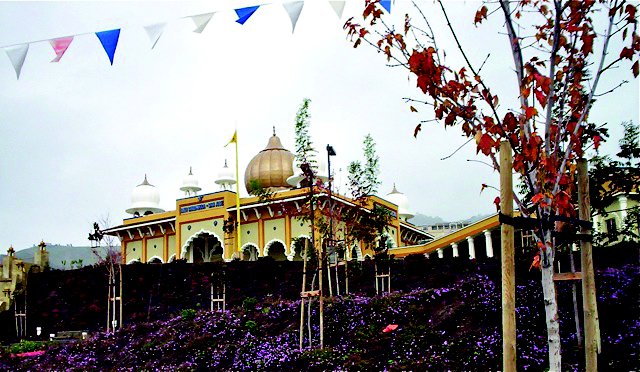After the tragic shootings at a Sikh temple in Illinois earlier this month, many people seem to have questions about this religion. Sikh men are often confused with Muslims because they both often have facial hair and wear turbans. Although Sikhism is a major world faith (20 million members, at least 250,000 in California, including more than 50,000 in the Bay Area), most people may not know much about this faith.
Sikhism was founded in the Punjab region of northern India in the 15th century by Guru (teacher) Nanak. He wrote notable devotional hymns and set out such basic doctrines as the worship of one god and the practice of virtues like honesty, compassion, patience and generosity.
Sikhism combines elements of Hinduism and Islam. Nanak taught that in both these religions the truth about God was obscured by unnecessary ritual. He believed that one could come closer to God through meditation and devotion rather than ceremonies. He rejected India’s caste system for causing discrimination and taught that all people are equal and emphasized that salvation comes through rejection of worldly values, the worship of God and practicing tolerance and brotherly love toward all.
Guru Nanak was succeeded over the centuries by nine other gurus who developed the religion more fully by building temples, providing for observation of festivals and compiling the sacred scripture known as the “Adi Granh.”
Worship services feature singing of hymns with musical accompaniment, lectures, prayer and distribution of “Ka’r’ah,” a sweet bread pudding. Sikhs remove their shoes and cover their heads during worship to show respect.
Persecution by the mughal (Muslim) authorities in India led to the founding of a Sikh self-defense brotherhood called the “Khalsa” (meaning “pure”). Members vowed to avoid liquor, drugs, tobacco and to devote themselves to prayer. Sikhs who desire to join this order go through a baptism rite and take the name of “Singh” (meaning “lion”).
This led to the distinctive appearance of Sikh men, involving the five K’s or emblems: uncut hair and beards (hence the wearing of turbans), a comb to hold the hair in place, a dagger, a steel bracelet and pants that end below the knees.
San Jose is the home of perhaps the nation’s largest “gudwara” (temple), a 20,000 square foot complex opened in 2005 at a cost of $10 million. Located at 3636 Murillo Ave., the domes are visible from many neighboring streets. While the current facilities can accommodate 1,500 worshippers, plans are to add 70,000 square feet of additional buildings as finances permit.
The temple’s main building has doors facing all four directions, symbolizing that people from everywhere are welcome. Pools and fountains surround it. Inside the lobby is a room to leave one’s shoes as well as a collection of scarves for both men and women to cover their heads.
The main building’s upstairs has several rooms, one of which houses exhibits about the history and practice of Sikhism. The side buildings, connected by covered walkways, are very versatile, with moving walls to provide separate spaces. One houses the temple’s “langar,” a kitchen/dining area providing free meals throughout the day. Visitors are always welcome at Sikh temples; call 408-274-9373 for more information.













